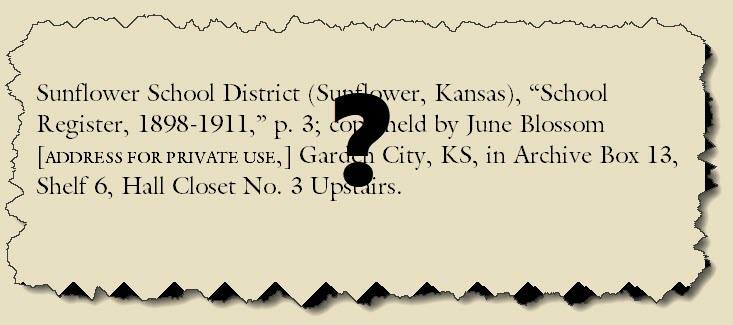“I wonder,” our inquirer asked, “Why do citations to family artifacts not include our file numbers?”

Great question! In fact, we could ask this about a lot of things. These days we all capture images of the documents we use. We have our filing system to maintain those images—sometimes physical but usually electronic. So why do our citations not include the image IDs, the e-folder name or notebook number, etc.?
The short answer is ...
It can. In our working files, we can add to a citation anything at all that we feel will help us use or understand that source while we’re working on this project.
The longer answer is ...
By long-standing convention, citations use locational data when that data is needed for someone else to locate the information we’re using—or for us to locate something outside our possession.
- For a book, we cite the exact page. However, if it's not a very rare book, we don’t cite the location of the book in a specific library because most books are obtainable in a number of places.
- For a manuscript in an archive, something that’s available only in that one place, the locational data we cite should place the document into a file, collection, series, and record group in that facility.
- For a microfilmed record or an online image, after we cite the record itself, our locational data would be the ID of the microfilm and the frame number—or the identity of the website and the URL or path to find the image online.
In our working notes, sure, we can add the call number of the book in a specific library. When we capture images, we can add the file number or path within our own organizational system. But, because this data helps no-one other than ourselves and everybody hates long citations, when we publish our work we’ll need to go through all citations and remove the personal data that’s useful to no one but ourselves. The thought of that chore usually persuades us to develop a document-archiving system that is independent of our citations.
HOW TO CITE: Elizabeth Shown Mills, "Citing Locational Data," blog post, QuickTips: The Blog @ Evidence Explained (https://www.evidenceexplained.com/quicktips/citing-locational-data.com : posted 24 June 2018).